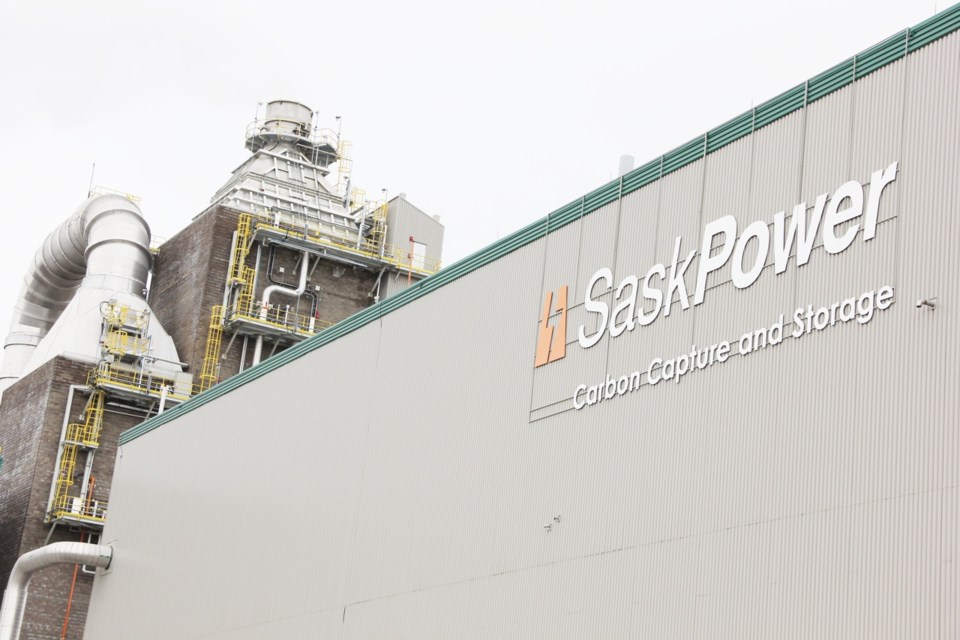Saskatchewan, like the rest of Canada, will be devouring electricity by the gigawatt hour for the foreseeable future.
The rapid growth of the computerized, AI, website platforms and crypto worlds are demanding huge volumes of what we already produce in that realm and can do so much more. Those needs are added to the regular, or we might say the natural flow of increasing demands for electricity in the ongoing traditional business and domestic environments.
That is why our provincial braintrusts made a wise decision to retain coal as a vital asset to be used within that sector.
We know all about the negatives. The environmental hawks have made their valid points on numerous occasions. However, they sometimes failed in their single mindedness to consider the positives that coal-fuelled electrical generation can bring to the table.
Naturally we start with the fact that coal is really not that “dirty” any more.
The pictures of black-faced miners emerging from tunnels with trains of coal cars dragged to the surface by mules, has only been a memory in Saskatchewan for about 80 decades. So let’s look at the current reality scenarios.
First off, coal is there for the picking. Lots of it and it comes as a free natural resource for Saskatchewan.
Second – the land used for strip-mining extraction of coal is reclaimed and put to useful purposes with the topsoil put back into action mode. No tunnels. The deer, moose, birds and farmers love this landscape.
Third – carbon dioxide (CO2) and hydrogen sulfide (H2S) capture elements work. The CO2 can be stored miles beneath the surface or can be used as an underground stimulant for future oil recoveries. Plus, the cost of future capture units would come at a price of less than half of what the expenses were for the pilot project at Boundary Dam over 10 years ago. The nearby Shand Power Station was built for expansion and/or installation of carbon capture equipment and materials.
Fourth – Shand boasts of a significant greenhouse operation that is often ignored by coal critics. The heat/energy from the plant could be used to expand that scenario so that all types of food stuffs can be grown in a climate-controlled environment, not just trees, bushes and flowers. The potential is nearly limitless.
Fifth – We have to keep in mind that with the growth of the techno world, there is an increasing demand for cooling waters. Coal plants make good use of that and as a result, southeastern Saskatchewan has been blessed with a good volume of that vital resource. The dams and reservoirs put in place in the 1960s and 1990s were the ideas and products of forward-thinking governments.
Although the crypto coin world remains somewhat nebulous and even frightening in some minds, there is a demand for electrical power by those who do “mine” and use crypto in the new world order. They use our resources for their power needs just as server farms and other tech outlets are always looking for water, land, buildings and electricity located near modest sized communities that can house the technologists and their support staffers.
They prefer the somewhat smaller centres as opposed to the major cities where their operations often come under pressures due to noise and electrical grid factors, as well as the traditional housing issues. Saskatchewan’s landscape can handle those needs, including nearby access to major power grids.
So Saskatchewan, we believe, would be well advised to maintain and yes, maybe even expand coal mining operations while continuing to explore other electrical avenues such as natural gas, wind, solar, geothermal, hydro and nuclear.
We must keep a clear mind about all of this, and those who expound the virtues of the supposed more environmentally-approved resources have to be reminded that these sources also come with anticipated environmental costs, just as coal has in the past.
What happens to those huge wind generator blades once they’ve reached their useful ends? We’ve been told that currently this is around the 20-year mark.
Are these giant blades recyclable? If not, what are they going to do with them? What about the housing for those wind generators? Recyclable?
Solar panels? Same thing. Maintained how? Built in China? Hmmm! Recycled after useful service or simply buried in the prairie soil to be dug up by farmers? Are they set up on wastelands or current crop production sites?
Spent nuclear rods need to be stored for centuries. That comes with a cost and a corresponding fear and super caution factor.
Natural gas emissions need carbon capture elements too.
So, you see, nothing is perfect in the wonderful world of electrical production. There are prices to be paid, but they can be reduced significantly with proper investment and foresight, and that means looking well past the next campaign and election cycle.
We trust we’ll have SaskPower as a reliable overseeing Crown corporation boss of all this futuristic adventure. We know they have allowed several corporate and First Nations entities to become engaged in the current and future processes, so that too, will have to be monitored carefully to ensure that future electrical production decisions for Saskatchewan are not going to be made in Houston, Toronto, or Riyadh but rather in Regina.
This is where the future will rest with our provincially-based decision-makers as plans are unfolded to embrace a Canada-wide energy complex that could be the future. It’s an opportunity for the province to become a leader in one vital element of a vital business of producing electricity, and as a place where people want to live, work and move forward, safely and assuredly.





